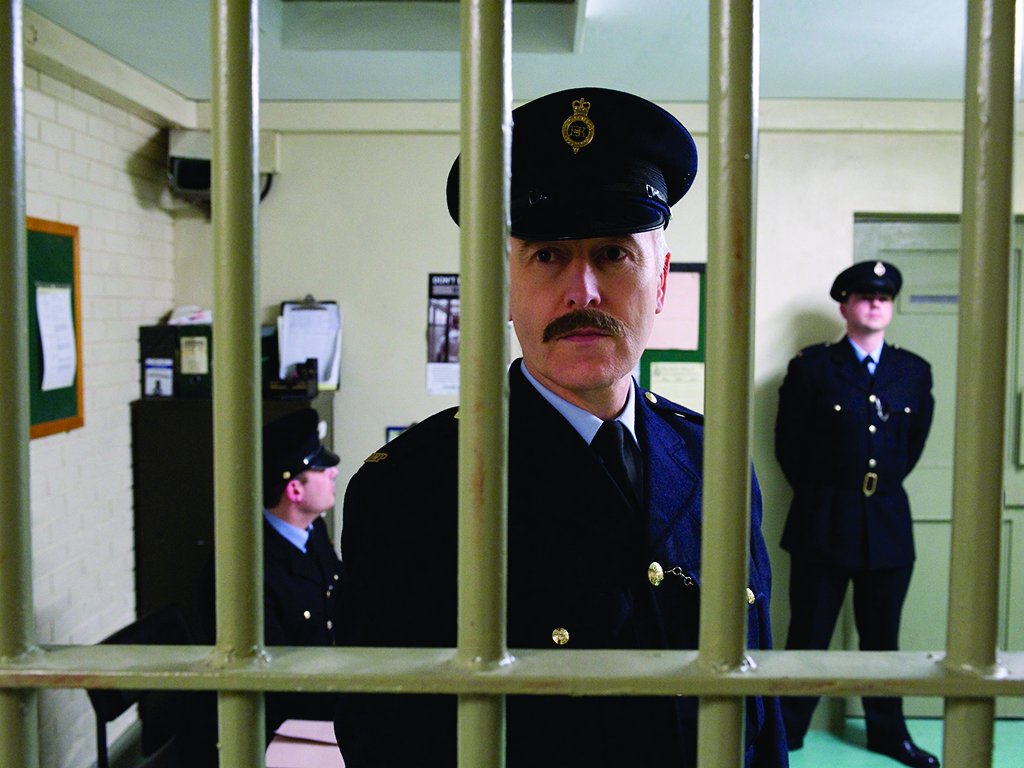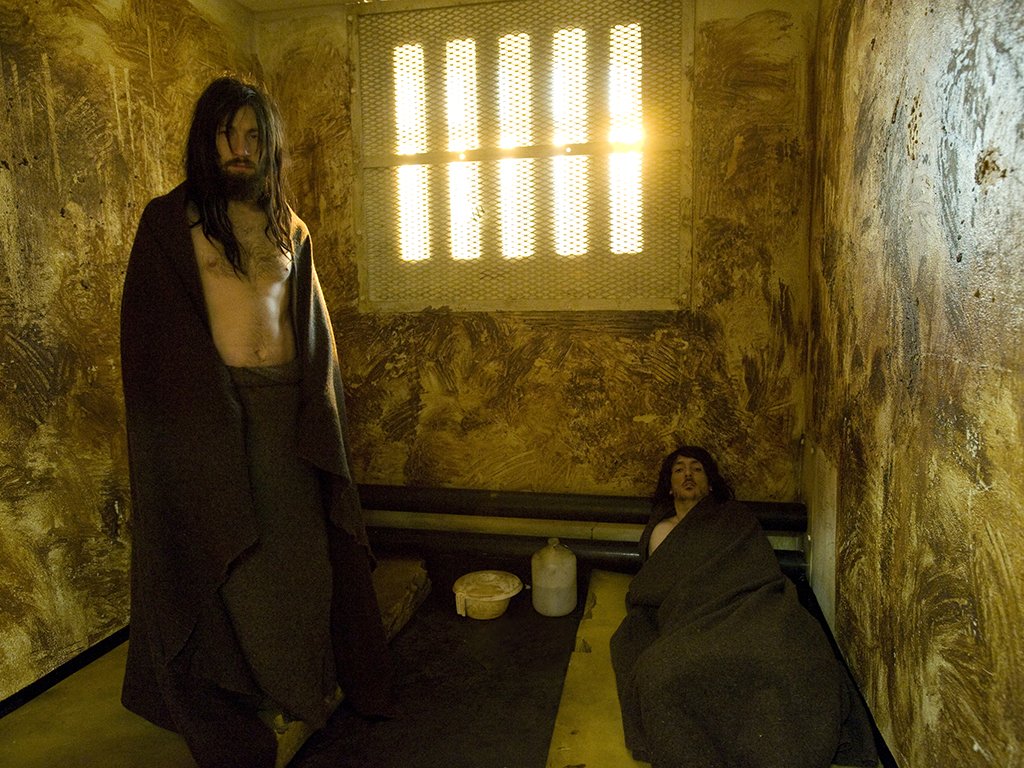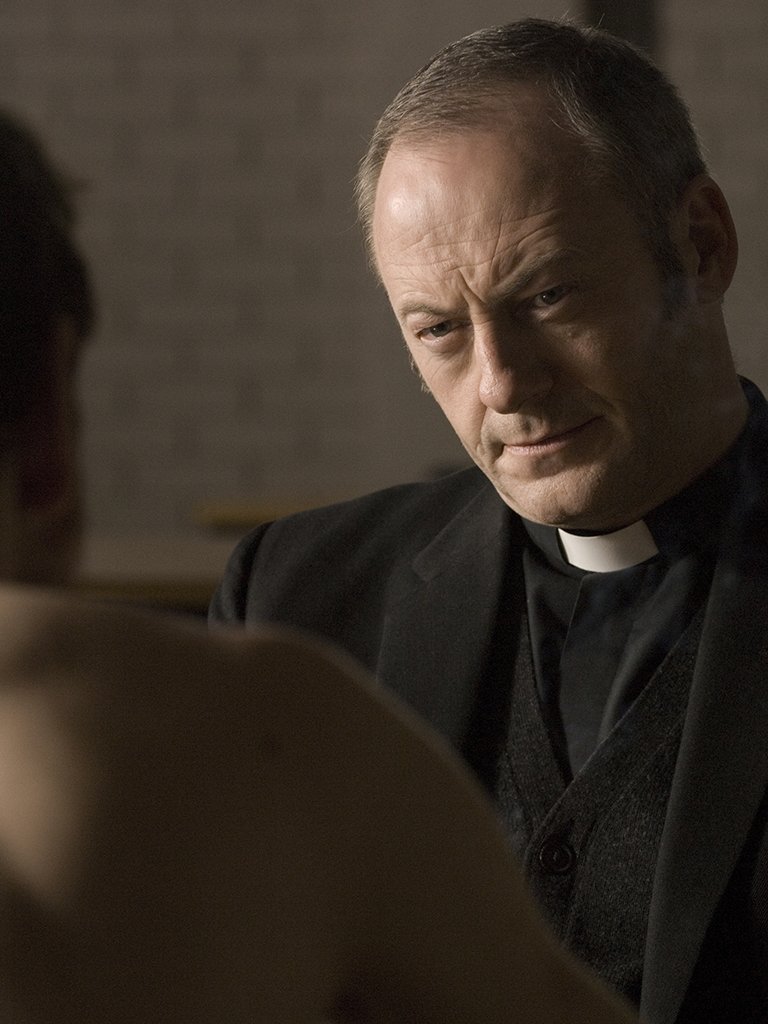Sobre nosotros
Servicios al cliente
Atención al cliente
Acceso Regional
Legales y políticas
Obtén la aplicación

Apunta tu cámara para descargar la aplicación
Copyright © 2024 Desertcart Holdings Limited
![Hunger (The Criterion Collection) [DVD]](https://m.media-amazon.com/images/I/81Sjb39eM-L.jpg)





With HUNGER, British filmmaker and artist Steve McQueen has turned one of history’s most controversial acts of political defiance into a jarring, unforgettable cinematic experience. In Northern Ireland’s Maze prison in 1981, twenty-seven-year-old Irish Republican Army member Bobby Sands went on a hunger strike to protest the British government’s refusal to recognize him and his fellow IRA inmates as political prisoners, rather than as ordinary criminals. McQueen dramatizes prison existence and Sands’ final days in a way that is purely experiential, even abstract, a succession of images full of both beauty and horror. Featuring an intense performance by Michael Fassbender, HUNGER is an unflinching, transcendent depiction of what a human being is willing to endure to be heard.
G**O
Truth and Art, Art and Truth
I have no objection to Truth. Do you? How could you, honestly?And I have no objection to Art. Hey, some of my best friends are artists.Most of the many favorable reviews of this film Hunger laud its artistic achievement. Perceiving Art is a totally subjective matter, but most of "us" are modestly certain that we know Art when we see it. This film is indeed artfully made. Brilliantly so! And artfully acted. One has to wonder how Michael Fassbender survived the making of Hunger; the ravages to the body of his character, Bobby Sands, are horrifying to behold. Much is horrifying in this film. The brutality and squalor depicted in the Maze Prison of Northern Ireland, where the 1981 IRA no-wash, no-uniform, and hunger strikes took place, are Holocaust-level horrifying. The film is not a narrative, not a thriller, certainly not an entertainment. It's a depiction of horror, and it's absolutely obvious that director Steve McQueen and his cast of actors are convinced of the Truth of their depiction. "Conviction" is very convincing.But that drags me screaming up against the question of the relationship between Truth and Art. Art demands subjective verification. Truth, however, pleads for objectivity even while the Art remains ineluctably subjective. After all, Art is made by Artists, who are fearsomely plausible even when they're wrong. Trust me, I'm not asserting that Steven McQueen was wrong, or that the depiction of the Maze Prison is inaccurate! But I don't know! If this were a book of supposed scholarship, I'd be hell-bent on determining its factuality. But it's Art! I'm touchy about Art that exists chiefly to portray a Truth. Is "Art that Lies" better than "No Art at All"? Think of the DW Griffith film "Birth of a Nation" - the filthiest Lie ever told but almost revered for its "artistic" innovations. No wonder many people shun "Art as Truth" in favor of "Art as Entertainment."Your reaction to this film will depend on your attitude toward the strife in Northern Ireland. The closest thing to an "adversary" or villain in this motion picture is the voice of Margaret Thatcher, which you'll hear over a dark screen. I confess that my disapproval of Thatcher and Thatcherism is potent enough to tip my sympathies toward the IRA strikers all by itself.The heart of this film is a single conversation between Bobby Sands and a Catholic priest with IRA connections. It's filmed Bergman-style with an unmoving camera at chest-height. It illuminates both the violent brutality that precedes and the wrenching tragedy that follows. If the Belfast accents and slang make it hard to follow the dialogue, don't be too proud to use the subtitles.!
A**T
As close to fact as possible so long after the events!
Having read some of the other reviews, I cannot connect to any of those who viewed this as "art". This was life in the Maze and Long Kesh for those suspected of IRA involvement in the late 70's and early 80's. I was not a prisoner, but I knew many friends and family members of those who were and what is depicted in this film is as close to truth as it gets. It was brutal, it was inhuman, it was wrong and to this day the British will try to defend it as they spent 35 years defending how their soldiers murdered innocent civilians in Derry on Bloody Sunday by saying the British Army was under attack by the IRA, a fact long denied and finally admitted to by the British government. I cheered when the sadistic prison guard was shot as he visited his mother. Had someone asked, I would have gladly done it myself. Now we complain about the cruelty and brutality of Isis. Then, we who lived under the yoke of British occupation had the same complaints about the British army. All that has changed is the locale and the name. I watched this film and cried when those men were beaten and subjected to such dehumanizing treatment. And my heart soared when I remember the sacrifice (not suicide by the way, but an ancient form on Celtic protest) of those ten young men, and all the others who came before and after. My special prayer was to have ten minutes alone in a locked room with Margaret Thatcher and I would have gladly shown her what crime really was. Am I bitter? Bet your bum. Most of the comments on this film show that few really had any concept of what occurred during this period in Irish history. If they only knew how close to true it is.
S**S
Big Questions / Few Answers
Faced with headlines about Cuban prisoners starving themselves to death and the unsolved status of Guantanamo Bay prisoners, this movie about IRA prisoners in Northern Ireland begs many questions but provides few answers. Are they criminals in a glorified gang? The British answer would be yes. Are any of the resistance methods employed by the IRA effective? Who is being punished more by the no clothes no cleaning strike?The questions of ethics and politics are neatly folded into the various characters of the cast. Sands is clearly right to stand for status as a political prisoner. The British jailer is clearly right to hate the 2-bit gangsters who drape Irish nationalism over their crimes. The priest is right in loving the sinner but expressing serious doubts about the virtues of a hunger strike. The nurses are right in caring for their patient and hating what he does as he slowly wastes away.The acting carries this film and prevents it from being heavy-handed or preachy. Each actor carries his point of view so confidently and completely that the viewer can't help but empathize with the horrific events that each actor confronts.The film work is excellent. Nothing too showy or gimicky: no one is trying to make a faux-documentary here. The little details captured by camera particularly in the early scenes during the no wash strike a powerful and disturbing. The body of sands as he detriorates is painfully vivid.After it is finished, this film leaves the big questions open and will make viewers want to talk about some of the complexities brought out in the picture. Ultimately, I think, the one question each character forces us to confront is: how can mankind be so cruel to each other and yet so oblivious to other's suffering at the same time?
Trustpilot
Hace 1 mes
Hace 3 semanas